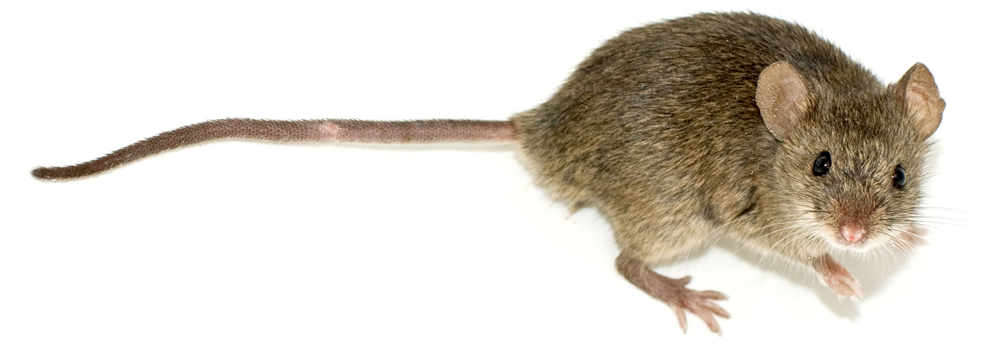
The House Mouse
Not a Pet
The house mouse (Mus musculus) is considered one of the most troublesome and economically important pests in the United States. House mice live and thrive under a variety of conditions in and around homes and farms. House mice consume food meant for humans or pets. They contaminate food-preparation surfaces with their feces, which can contain the bacterium that causes food poisoning (salmonellosis). Their constant gnawing causes damage to structures and property.
Recognizing Mouse Infestations
Droppings, fresh gnawing and tracks indicate areas where mice are active. Mouse nests, made from fine shredded paper or other fibrous material, are often found in sheltered locations. House mice have a characteristic musky odor that identifies their presence. Mice are occasionally seen during daylight hours.
House Mouse Facts
House mice are gray or brown rodents with relatively large ears and small eyes. An adult weighs about 1/2 ounce and is about 5 1/2 to 7 1/2 inches long, including the 3 to 4 inch tail.
Although house mice usually feed on cereal grains, they will eat many kinds of food. They eat often, nibbling bits of food here and there. Mice have keen senses of taste, hearing, smell and touch. They are excellent climbers and can run up any rough vertical surface. They will run horizontally along wire cables or ropes and can jump up 13 inches from the floor onto a flat surface. They can slip through a crack that a pencil will fit into (sightly larger than 1/4 inch in diameter).
In a single year, a female may have five to 10 litters of usually five or six young each. Young are born 19 to 21 days after mating, and they are mature in six to 10 weeks. The life span of a mouse is about nine to 12 months.
